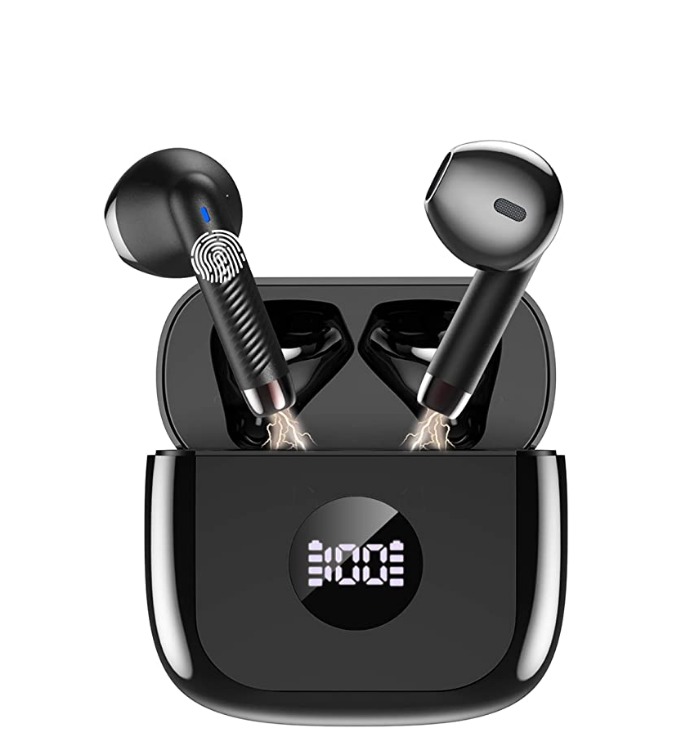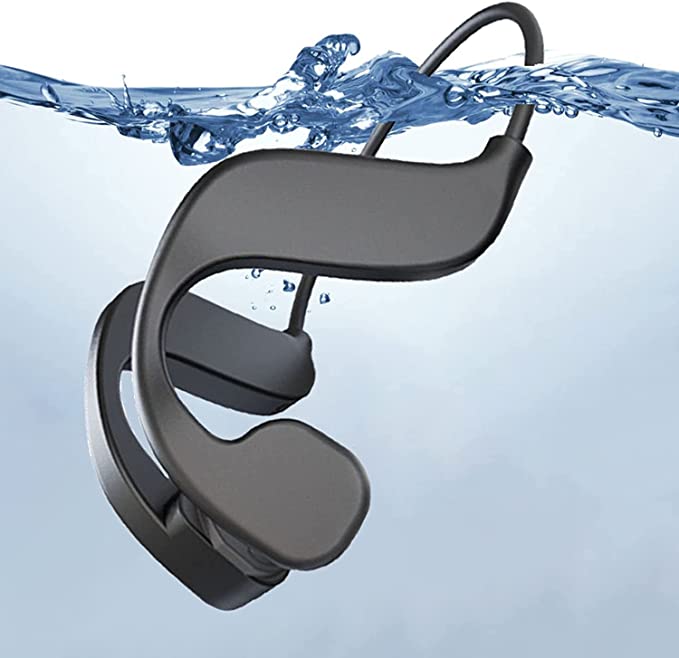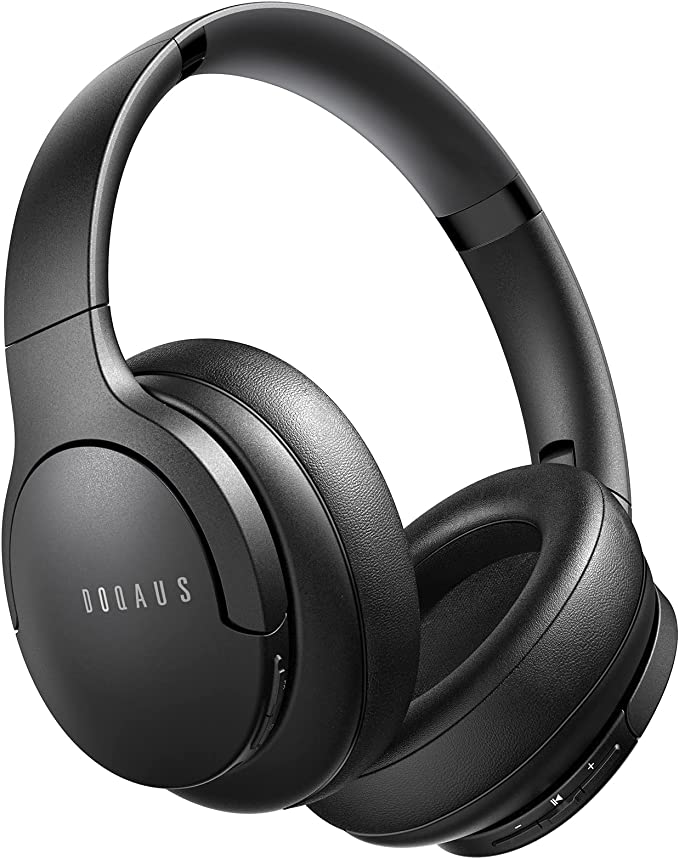Walk through any modern city, campus, or park, and you’ll witness a quiet revolution playing out in millions of ears. Tiny wireless earbuds have become nearly ubiquitous, piping music, podcasts, and calls directly into our personal sound bubbles, untethered from the devices in our pockets. But how much do we truly understand about the technology packed into these miniature marvels? They can often feel like black boxes, performing their wireless magic without revealing their secrets.
Let’s peel back the curtain. Using the manufacturer’s description of a specific product, the Jxrev J53 Wireless Earbuds (model J53, ASIN B0B8782WLJ, first available August 1, 2022, according to the listing), as our case study, we can embark on a journey to explore the fascinating science and engineering that make modern wireless audio possible. Our goal isn’t to review this particular product, but rather to use its claimed features as a springboard to understand the broader principles of Bluetooth connectivity, sound reproduction, battery management, and water resistance that define today’s earbud experience.
A crucial note before we begin: All specific features, performance metrics, and material mentions related to the Jxrev J53 in this article are drawn solely from the product description provided by the manufacturer (Jxrev) on its Amazon listing. We haven’t independently tested these claims. Our focus is on explaining the underlying science generally associated with such features, empowering you with knowledge applicable to any similar device.

The Invisible Handshake: Decoding Bluetooth 5.3
The very foundation of wireless earbuds is Bluetooth. Born from a project at Ericsson in the 1990s (and intriguingly named after a 10th-century Viking king who united Danish tribes), Bluetooth technology has become the global standard for short-range wireless communication. Think of it as a sophisticated, invisible handshake protocol. When you pair your earbuds, your phone and the earbuds engage in a complex digital conversation over specific radio frequencies (around 2.4 GHz, the same busy neighborhood used by Wi-Fi and microwave ovens), agreeing on security keys and communication channels to establish a private link. They cleverly hop between frequencies hundreds of times per second (a technique called Frequency Hopping Spread Spectrum or FHSS) to avoid interference and maintain a stable connection – like quickly switching radio channels if one gets noisy.
The Jxrev J53 listing highlights its use of Bluetooth 5.3. Bluetooth standards evolve, and the jump from earlier versions (like 5.0, 5.1, 5.2) to 5.3 isn’t about wildly new features, but rather refinements focused on efficiency and reliability. Generally speaking, Bluetooth 5.3 introduces improvements aimed at:
- Enhanced Connection Stability: Through more intelligent channel classification and other optimizations, it tries to predict and avoid “bad” frequencies prone to interference, leading to fewer audio dropouts.
- Lower Power Consumption: By communicating more efficiently (e.g., only transmitting information when necessary, optimizing advertising packets), devices using Bluetooth 5.3 can potentially extend battery life.
- Improved Latency Control: Latency is the delay between the audio signal leaving your phone and arriving at your ears. While Bluetooth inherently has some latency, version 5.3 includes features that can help manage it better, which is particularly important for keeping audio synced with video or for responsive gaming audio.
- Faster Transmission & Longer Range (Potentially): While Bluetooth 5.x can support higher speeds and longer ranges than much older versions, the actual performance depends heavily on the specific implementation and device capabilities.
The Jxrev J53’s description claims that its implementation of Bluetooth 5.3 delivers these benefits: a “more stable connection, lower latency, lower power consumption, faster transmission,” and a connection range of up to 15 meters (roughly 49 feet). It also mentions support for standard Bluetooth profiles – HSP, HFP, A2DP, AVRCP. Think of these profiles as different “languages” for specific tasks: A2DP (Advanced Audio Distribution Profile) is the crucial one for streaming stereo music, while HSP (Headset Profile) and HFP (Hands-Free Profile) handle phone calls. This tech foundation enables convenience features like the claimed “One Step Auto Pairing,” designed to automatically reconnect the earbuds to your last used device when you open the case.

Crafting Your Personal Soundscape: Drivers, Sound, and Calls
How does an electrical signal carrying music turn into the sound waves hitting your eardrums? That’s the job of the driver – essentially a tiny loudspeaker inside each earbud. It typically works using an electromagnet that rapidly moves a thin membrane (the diaphragm) back and forth, creating pressure waves in the air that we perceive as sound.
The Jxrev J53 listing specifies 13mm graphene speakers with triple-layer composite diaphragms. Let’s unpack that:
* 13mm Driver Size: Driver size can influence sound characteristics. Generally, larger diaphragms can move more air, which is often associated with the ability to reproduce lower frequencies (bass) more effectively. A 13mm driver is relatively large for an earbud, potentially contributing to the “Deep Bass Stereo” sound profile the J53 claims to offer.
* “Graphene” and “Triple-Layer Composite”: These terms relate to the diaphragm material. Graphene, a form of carbon just one atom thick, is known for being incredibly strong yet lightweight. Composite diaphragms combine different materials to balance properties like stiffness (for accurate sound reproduction without distortion) and lightness (for responsiveness). In theory, using advanced materials like these could lead to clearer, more detailed sound with better transient response (the ability to handle rapid changes in music). However, it’s crucial to understand that the final sound quality depends immensely on the driver’s overall design, the earbud’s acoustic enclosure, and electronic tuning – not just the diaphragm material alone. The J53’s actual sound signature is based on the manufacturer’s claims.
The mention of “Stereo” refers to the standard two-channel audio (left and right), which creates a sense of space and directionality in music. The J53, according to the listing, supports both using the pair for stereo sound and using just one earbud in mono mode.
For phone calls, the listing states each earbud has a built-in “HD Mic.” More importantly, it claims these microphones feature technology to reduce background noise during calls. This isn’t the same as Active Noise Cancellation (ANC) for listening to music; rather, it focuses on isolating your voice from ambient sounds so the person you’re calling can hear you more clearly. This often involves using multiple microphones and clever signal processing algorithms.
The Marathon Runner: Understanding Battery Life and Charging
Untethered convenience comes at the cost of needing power. Wireless earbuds rely on tiny rechargeable batteries, typically based on Lithium-ion or Lithium-Polymer chemistry. These batteries store electrical energy chemically and release it on demand. The J53 employs the common two-part power system: small batteries inside each earbud handle immediate playback, while the charging case acts as a portable power bank, containing a larger battery to recharge the earbuds multiple times on the go.
According to the Jxrev J53 product description:
* The earbuds themselves provide 6 to 8 hours of playtime on a single charge.
* The charging case holds enough power for an additional 32 hours, bringing the claimed total playtime to 40 hours before the case itself needs plugging in. (Actual battery life always varies significantly based on volume level, connection stability, and usage patterns).
* The case features a Dual LED Display showing the remaining charge percentage – a genuinely useful feature acting like a ‘fuel gauge’ for your listening time.
* The case recharges via USB-C, taking a claimed 1.5 hours for a full charge. The adoption of USB-C is a welcome trend, offering a reversible connector (no more fumbling to plug it in the right way) and becoming the increasingly universal standard for charging everything from phones to laptops.
Ready for the Elements (and Your Ears): IP7 Waterproofing and Fit
Life happens. You might get caught in the rain during a run, or work up a serious sweat at the gym. That’s where durability ratings come in. The Jxrev J53 listing claims an IP7 waterproof rating. What does that mean?
“IP” stands for Ingress Protection, an international standard (IEC 60529) that classifies how well a device is protected against intrusion from solids (first digit, often ‘X’ if not rated) and liquids (second digit).
* The ‘7’ in IPX7 specifically relates to water immersion. To achieve this rating, a device must withstand being submerged in fresh water up to 1 meter (about 3.3 feet) deep for 30 minutes without harmful ingress of water.
This is a significant level of protection. For the J53, if the IP7 claim is accurate, it means it should comfortably handle sweat, splashes, and even being caught in heavy rain. You could likely drop it in a puddle and retrieve it quickly without issue. However, IPX7 does not mean the earbuds are suitable for swimming. Continuous submersion, high-pressure water jets (like a shower), or use in chlorinated or salt water are generally outside the scope of this rating and could still cause damage.
Beyond ruggedness, comfort and fit are paramount for earbuds. The J53 listing highlights an ergonomic design and an ultralight weight of 3 grams per earbud (about the weight of a US penny!). A good ergonomic fit is crucial not only for long-term comfort but also for creating a proper seal in the ear canal. This seal helps with passive noise isolation (blocking outside sounds physically) and is often essential for achieving the best possible bass response. A secure fit also prevents the earbuds from falling out during exercise or movement.

Fingertip Commands: Touch Controls and Compatibility
Modern earbuds often ditch physical buttons for touch-sensitive surfaces. The Jxrev J53 listing mentions “Smart Touch Control,” allowing users to manage playback (play/pause, skip tracks), adjust volume, and handle calls simply by tapping or holding the earbuds. This offers convenience, keeping your phone in your pocket.
Finally, compatibility is rarely an issue with modern Bluetooth devices. As expected, the J53 is described as being compatible with iOS and Android systems and most other Bluetooth-enabled devices (smartphones, tablets, laptops, etc.), adhering to the universal nature of the Bluetooth standard.
Conclusion: Beyond the Specs – Understanding Your Tech
From the intricate radio dance of Bluetooth 5.3 ensuring a stable connection, to the miniature speakers vibrating to create your personal soundtrack, the carefully managed power flow from lithium batteries, and the protective shield offered by an IP7 rating – the technology inside modern wireless earbuds like the Jxrev J53 is a symphony of applied science.
While we’ve used the manufacturer’s description of the J53 as our guide, the real takeaway isn’t about the specifics of this one model. It’s about appreciating the principles at play. Understanding how Bluetooth works helps you troubleshoot connection issues. Knowing what an IP rating signifies lets you use your devices confidently within their limits. Recognizing the factors influencing sound quality and battery life allows you to make more informed choices.
Technology doesn’t have to be a black box. By peeling back the layers, even just a little, we gain not only knowledge but also a deeper appreciation for the ingenuity packed into the gadgets that shape our daily lives. So, the next time you pop in your wireless earbuds, take a moment to consider the invisible handshake, the vibrating diaphragm, and the protective seals – the hidden science creating your seamless audio experience. And remember, while product descriptions provide a starting point, a curious and informed mind is your best tool for navigating the ever-evolving world of technology.




